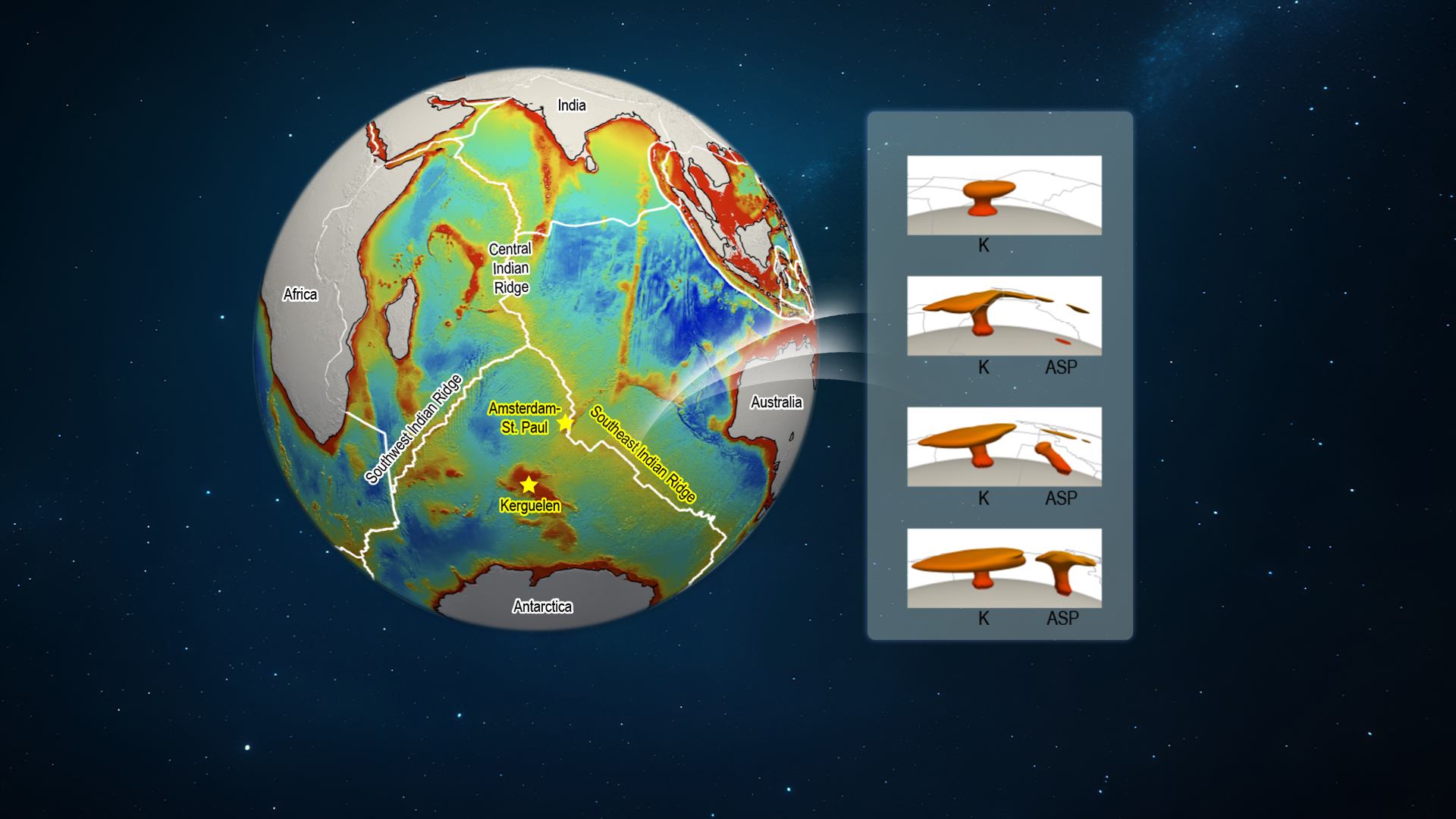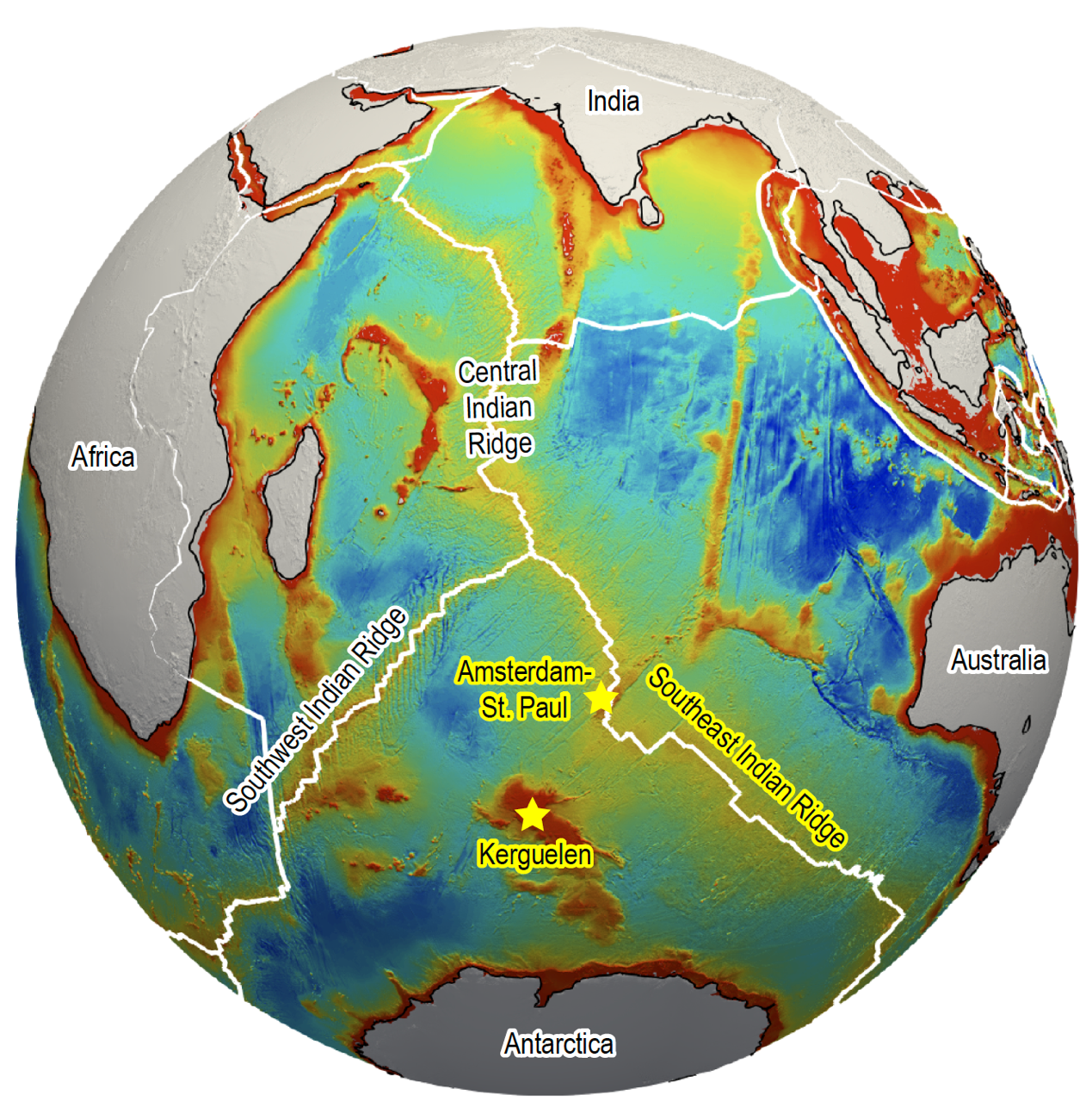The mid-ocean ridge system is a global underwater volcanic chain extending more than 50,000 km in length, making it the longest volcanic chain in the solar system. Hotspots originate from deep within the Earth, causing thermal or chemical plumes to upwell and lead to volcanic eruptions, as seen in the Hawaiian Islands. Mid-ocean ridges and hotspots represent two primary forms of volcanic activity on Earth’s surface. Understanding ridge-hotspot interactions is crucial for insights into Earth’s internal processes and global material cycles.

Chair Professor Jian Lin’s research team from the Department of Ocean Science and Engineering at the Southern University of Science and Technology (SUSTech), in collaboration with other researchers, has recently made breakthroughs in the study of mid-ocean ridge-hotspot interactions, revealing significant interactions between the Southeast Indian Ridge and the adjacent dual hotspots.
Their findings were published in Earth and Planetary Science Letters entitled “Interaction of Kerguelen and Amsterdam-St. Paul Dual Hotspots with Southeast Indian Ridge”.

Figure 1. Topography of the Indian Ocean
Using super-computing resources and advanced 3-D geodynamic modeling platforms, the research team recreated the thermodynamic processes of mantle flow. They quantitatively demonstrated the significant contributions of ridge-hotspot interactions to magma generation and oceanic crust formation.
The results show that ridge-dual hotspots interaction can generate significant crustal thickening along the Southeast Indian Ridge. Furthermore, their findings indicate that the mantle flow of the smaller hotspot (Amsterdam-St. Paul) could be pulled by the larger hotspot (Kerguelen). These findings provide new insights into the dynamics of oceanic plate tectonics.

Figure 2. Ridge-dual hotspot interactions (K: Kerguelen. ASP: Amsterdam-St. Paul.)
Research Assistant Professor Yiming Luo is the first author of the paper, with Chair Professor Jian Lin and Research Professor Zhiyuan Zhou serving as the co-corresponding authors. Other collaborators include Xubo Zhang, Fan Zhang, and Jinchang Zhang from the South China Sea Institute of Oceanology, Chinese Academy of Sciences, and Han Chen from the Southern Marine Science and Engineering Guangdong Laboratory (Zhuhai). SUSTech is the primary institution of this work.
Paper link: https://doi.org/10.1016/j.epsl.2024.119088
To read all stories about SUSTech science, subscribe to the monthly SUSTech Newsletter.
Proofread ByAdrian Cremin, Yingying XIA
Photo ByDepartment of Ocean Science and Engineering